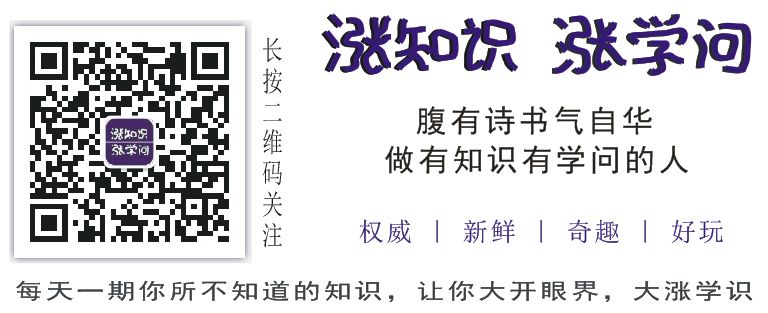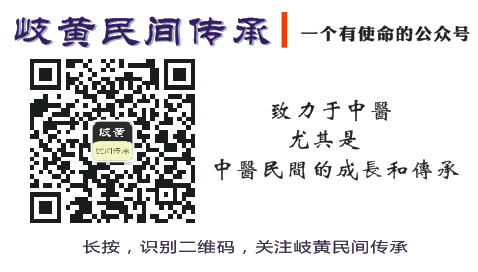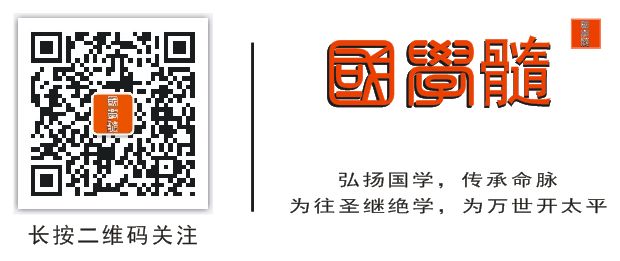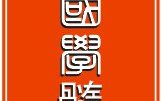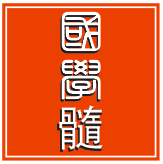
Promoting Traditional Chinese Culture, Inheriting the Lifeblood
Continuing the teachings of the sages, opening peace for all generations

The medicine of Qi Huang holds a crucial and significant position in traditional Chinese culture, being an inseparable part of it. Throughout the long river of history, it has condensed the wisdom of the Chinese people, contributing significantly to the historical processes over five thousand years, safeguarding against disasters and ensuring the prosperity of the Chinese nation. In this long historical flow, a wealth of medical civilization has accumulated, becoming a brilliant pearl. Sharing the teachings of Qi Huang medicine daily aims to promote its inheritance and benefit humanity.

Zhang Zhongjing’s pulse method, as he stated in his preface, is theoretically based on the “Nine Volumes of Suwen”. However, it differs from the purely theoretical overview of the “Suwen” as it combines his clinical practice experience, organically integrating the forms of pulse changes into the pattern differentiation, further developing and validating it in clinical diagnosis.
His works, “Shang Han Lun” (Treatise on Cold Damage) and “Jin Kui Yao Lue” (Essentials of the Golden Coffer), collectively referred to as “Jin Kui”, closely link the diagnosis and treatment of diseases under the titles of “Disease, Pulse, Syndrome, and Treatment”, setting a standard for future generations.
However, many later pulse studies have made the pulse phenomena overly mysterious and speculative, leading people into confusion, which is undesirable.
The author believes that to study and understand Zhongjing’s pulse method, one must deeply comprehend the content of its classic texts, distilling the essence while discarding the dross, and retain the scientific viewpoints and methods of pattern differentiation and treatment, which is the correct scientific attitude.
This article aims to roughly explore the relationship between the Xian Pulse and pain syndromes, to clarify this for fellow practitioners.
1Analysis of the Relationship between Xian Pulse and Pain Syndromes in “Shang Han Lun” and “Jin Kui”In Zhang Zhongjing’s “Shang Han Lun” and “Jin Kui”, there are approximately 30 passages related to the Xian Pulse and the diseases, pulses, and syndromes associated with it. Many of these passages are complex and even difficult to understand (some scholars believe that certain passages are not original texts by Zhongjing but were added by later pulse theorists—this remains to be verified). Here, we will discuss the relationship between the Xian Pulse and pain syndromes.The relationship between the Xian Pulse and pain syndromes includes the following points:In the 140th passage of “Shang Han Lun: Differentiating the Pulse and Syndrome of Taiyang Disease”, it states: “In Taiyang disease, if the pulse is Xian, there must be tightness in both flanks.”The general concept of Taiyang disease is: When external pathogens (which can refer to various external pathological stimuli) invade the body, the first to respond is the Taiyang—Ying and Wei Qi, which fights against the pathogens, leading to symptoms like chills and fever, known as Taiyang disease.The material basis for the exterior syndrome is the righteous Qi, and the treatment method is to assist the righteous Qi in dispersing the pathogens, guiding it according to the situation; when the pathogens are expelled, the righteous Qi can gradually recover.If purgative herbs are mistakenly used when there is no pathological accumulation in the intestines, the bitter cold herbs stimulate the intestinal tract (such as the Three Accumulation Decoction), inevitably leading to increased intestinal motility, spasms, gas production, and other stimulating symptoms; at the same time, indiscriminately attacking the righteous Qi within will inevitably reduce the exterior’s ability to resist pathogens, resulting in abdominal pain and even tightness and pain in the flanks, thus presenting a Xian Pulse.The formation of the Xian Pulse is undoubtedly caused by pain.This can be further elaborated in the following scriptures.In the 5th passage of “Jin Kui: Pulse and Syndrome of Abdominal Fullness, Cold Hernia, and Food Stagnation”, it states: “If the pulse at the cun is Xian, there will be tightness and pain under the flanks, and the person will feel cold.”Pain sensations generally occur when tissues or organs are injured or inflamed, thus, in this sense, pain has a protective significance.Based on the above two scriptures, it can be inferred that this belongs to visceral referred pain (Taiyang disease, purged) and inflammatory pain from the chest and abdominal wall.Pain transmission for visceral pain enters the spinal cord through the visceral nerves, ascending via the spinal thalamic tract, while pain from the corresponding organs covered by the peritoneum enters the spinal cord through the somatic nerves in the area of the organ.When inflammation is localized in the chest and flank membranes, due to the pain transmission centers being in the spinal nerves and autonomic nerves, the excitation of the sympathetic nervous system increases, causing vasoconstriction and increased pressure, resulting in the formation of a Xian Pulse.The author’s understanding of the above scriptures can also be supported by the 21st and 22nd passages in “Jin Kui: Phlegm, Drink, and Cough Disease”.It states: “If the pulse is deep and Xian, it indicates internal pain from suspended fluid;” and “For the disease of suspended fluid, the Ten Jujube Decoction is the main treatment.”This indicates that the pain is caused by exudative inflammation in the flanks.The pain response manifests as a Xian Pulse, and varying degrees of pain can correspond to different natures and forms of single Xian Pulse or combined forms such as deep Xian, tight Xian, or even hidden Xian.For example, in the 17th passage of “Jin Kui: Pulse and Syndrome of Abdominal Fullness, Cold Hernia, and Food Stagnation”, it states: “If there is abdominal pain, the pulse is Xian and tight, it indicates cold hernia. Cold hernia around the navel causes pain; if it occurs, there will be spontaneous sweating, cold hands and feet, and the pulse will be deep and Xian, indicating that the main treatment is the Greater Aconite Decoction.”From the above scriptures, it can be seen that varying degrees of pain can present three types of combined Xian Pulse: light pain presents a Xian Pulse; moderate pain presents a tight Xian Pulse; severe pain, with cold sweat and cold extremities, leads to a rapid contraction of the pulse vessels, narrowing the diameter (deep), and increasing pressure within the vessels, thus forming a deep Xian Pulse. This point has been practically experienced by the author in clinical practice.2Subjective Understanding and Preliminary Insights on the Xian PulseVarious pulse study texts from predecessors generally share a common concept in describing the characteristics of the Xian Pulse.The vascular wall strength of the Xian Pulse is high (rigid, hard), the vessel wall is tense, and the internal pressure is high, presenting a significant sense of resistance; the pulse at the cun, guan, and chi positions shows a forward thrusting pulsation at the cun, while the chi position exhibits a notable backward thrusting pulsation (in normal individuals, the chi pulse is generally low and flat).Examples of descriptions of the Xian Pulse include: “Straight and long” (from “Suwen”), “Like a bowstring, immovable upon pressure” (from “Jin Kui”), “Like a stretched zither string” (from “Pulse Classic”), “Immovable upon pressure, like pressing a zither string” (from “Treatise on Various Diseases”), and “Straight through the middle, firmly pointing down” (from “Pulse Classic: Errors in Publication”), all theoretically expressing the shape and characteristics of the Xian Pulse.
In addition to the aforementioned vascular factors, blood flow velocity, resistance to blood flow, and blood viscosity, some literature also mentions that increased levels of adrenergic neurotransmitters in the vessels and neurohumoral factors are related to the formation of the Xian Pulse. This connects to the pathophysiological process of sympathetic nervous system excitation triggered by pain syndromes.Thus, can we consider that: Xian Pulse is formed due to changes in the vascular wall, blood, neurohumoral factors, and endocrine activities?Therefore, establishing precise qualitative and quantitative standards for the Xian Pulse and organically integrating it with TCM pattern differentiation and treatment theories is undoubtedly still quite challenging, requiring further research and exploration.
|
I Copyright Statement:○The content of this article is sourced from “Compilation of Academic Experiences in Traditional Chinese Medicine in Ningxia”, compiled in 1986.。○ Copyright belongs to the relevant rights holders. If there are any improper uses, please contact us for immediate deletion.I Submission Email:[email protected] I Warning:All articles published on this platform are for the purpose of popularizing TCM knowledge and are only for reference and learning by professional TCM practitioners. They do not serve as prescriptions and do not constitute any advice, recommendations, or guidance. Please do not blindly try medications; this platform does not bear any responsibility for any consequences arising from this. If needed, please use under the guidance of a physician. All articles published on this platform only represent the author’s views. |
Recommended Reading
【Essence of Traditional Culture】Selected Excellent Articles from the Public Account:① Traditional Chinese Painting: Teaching You to Paint Impressionistic “Cockscomb Flower and Beetle” with Every Stroke② From Reproductive Love to Immortal Romance, the Mysteries of Bedroom Techniques—Exploring the Principles of “Fengshen Yanyi” (Part 2)③ Zhu You Technique: The Secret Technique of Soul Retrieval【Knowledge and Learning】Selected Excellent Articles from the Public Account:① The Qin Dynasty Unified China with the “Four Great Legions”; what was the ultimate fate of the legion that swept through the six directions?② This woman had “the talent of Lü Bu but lacked his evil”, ruling from behind the curtain, her life was quite legendary.③ Chiang Kai-shek’s slap created the image of a “just and fair” figure, but why did he not dare to strike?【Qi Huang Folk Inheritance】Selected Excellent Articles from the Public Account:① The Magical Folk Method of Transferring Ulcers, Moving the Evil Ulcer Tumor from Important Areas to Secondary Areas—Clinical Application of the Method of Transferring Ulcers② Difficulty Falling Asleep, Frequent Dreams, Light Sleep, Early Awakening, and Nightmares—A Brief Discussion on Professor Xu Hao’s Experience in Treating Insomnia③ The Lin Family’s Over a Hundred Years of Experience in Treating Bones: Lin Rugaos’ Treatment of 188 Cases of Fractures with Bone Repair Pills④ Irregular Sexual Life Leading to Premature Ejaculation—Clinical Experience of Professor Li Yueqing in Treating Male Diseases Combined with Anxiety and Depression⑤ Introduction of an Ancient Secret Recipe—Da Cheng Dan Recipe⑥ Treatment of Gastric Cancer, Intestinal Cancer, Esophageal Cancer, and Other Digestive Tract Tumors and Other Malignant Tumors with Phlegm-Resolving and Mass-Dispersing Formulas⑦ Self-formulated Zhenxiong Decoction for Treating 76 Cases of Impotence, Balancing Yin and Yang, Addressing Both Deficiency and Excess, and a Wonderful Formula for Harmonizing and Supplementing⑧ Yijing Decoction for Treating Infertility, Impotence, Premature Ejaculation, Lumbar and Knee Weakness, Fatigue, and Other Conditions—A Brief Analysis of Professor Wang Jinsong’s Clinical Insights in Male Health
For more exciting and excellent content, please follow and check in the historical articles
